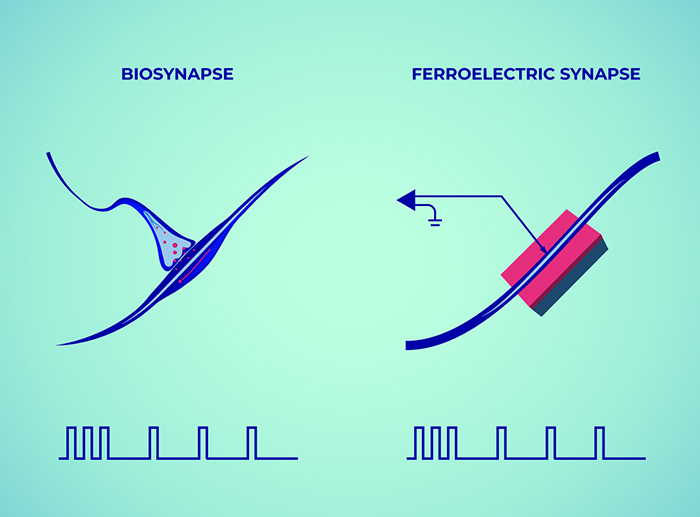The brain is the ultimate computing machine, so it's no wonder researchers are keen to try and emulate it. Now, new research has taken an intriguing step in that direction - a device that's able to 'forget' memories, just like our brains do.
It's called a second-order memristor (a mix of "memory" and "resistor"). The clever design mimics a human brain synapse in the way it remembers information, then gradually loses that information if it's not accessed for an extended period of time.
While the memristor doesn't have much practical use just now, it could eventually help scientists develop a new kind of neurocomputer – the foundation of artificial intelligence systems – that fulfils some of the same functions a brain does.
In a so-called analogue neurocomputer, on-chip electronic components (like the memristor) could take on the role of individual neurons and synapses. That could both reduce the computer's energy requirements and speed up computations at the same time.
Right now analogue neurocomputers are hypothetical, because we need to work out how electronics can mimic synaptic plasticity – the way that active brain synapses strengthen over time and inactive ones get weaker. It's why we can hang on to some memories while others fade away, scientists think.
Previous attempts to produce memristors used nanosized conductive bridges which would then decay over time, in the same way that memories might decay in our minds.
"The problem with this [first-order memristor] solution is that the device tends to change its behaviour over time and breaks down after prolonged operation," says physicist Anastasia Chouprik, from the Moscow Institute of Physics and Technology (MIPT) in Russia.
"The mechanism we used to implement synaptic plasticity is more robust. In fact, after switching the state of the system 100 billion times, it was still operating normally, so my colleagues stopped the endurance test."
In this case, the team used a ferroelectric material called hafnium oxide in place of nanobridges, with an electric polarisation that changes in response to an external electric field. It means low and high resistance states can be set by electric pulses.
 Synapse (left) vs memristor (right). (Elena Khavina/MIPT Press Office)
Synapse (left) vs memristor (right). (Elena Khavina/MIPT Press Office)
What makes hafnium oxide ideal for this, and puts it ahead of other ferroelectric materials, is that it's already being used to build microchips by companies such as Intel. That should mean it's easier and cheaper to introduce memristors if and when the time comes for an analogue neurocomputer.
"The main challenge that we faced was figuring out the right ferroelectric layer thickness," says Chouprik. "Four nanometres proved to be ideal. Make it just one nanometre thinner, and the ferroelectric properties are gone, while a thicker film is too wide a barrier for the electrons to tunnel through."
The actual 'forgetfulness' is implemented via an imperfection that makes hafnium-based microprocessors difficult to develop – defects at the interface between the silicon and hafnium oxide. These same defects allow memristor conductivity to die down over time.
It's a promising start, but there's a long way still to go: these memory cells still need to be made more reliable, for example. The team also wants to investigate how their new device could be incorporated into flexible electronics.
"We are going to look into the interplay between the various mechanisms switching the resistance in our memristor," says physicist Vitalii Mikheev, from MIPT.
"It turns out that the ferroelectric effect may not be the only one involved. To further improve the devices, we will need to distinguish between the mechanisms and learn to combine them."
The research has been published in ACS Applied Materials & Interfaces.
